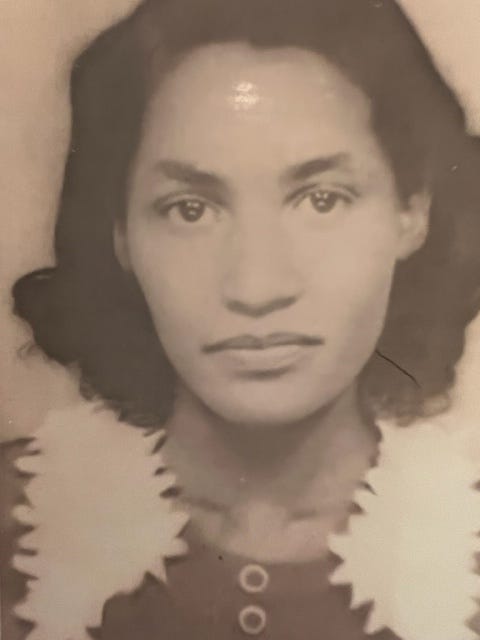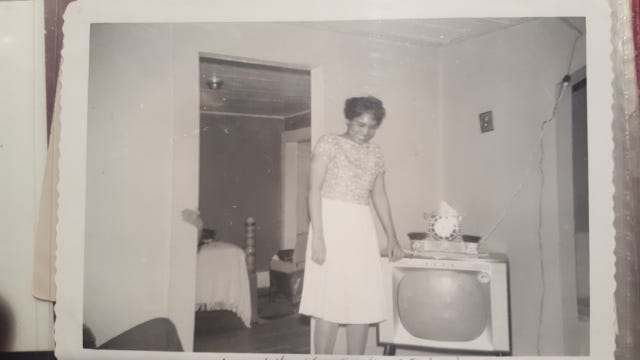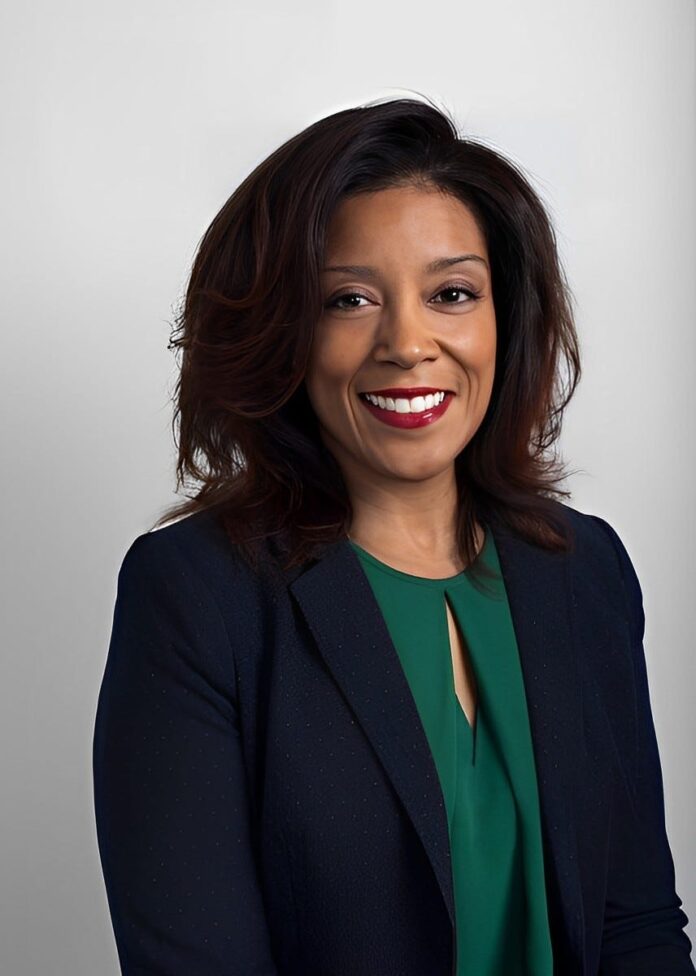Professor Monica Sanders Of The Undivide Project On Why Brands Should Embrace Slow Fashion and Renewable Consumption
… Fashion is a statement about who you are and how you navigate the world. I believe we’ve moved away from this idea and have become too focused on trends or what’s considered attractive, instead of using our attire to communicate our individuality. For example, if I’m wearing the latest trendy outfit, it conveys a certain message about me, but if I’m in comfortable, professionally appropriate attire, that tells a different story. My style is sustainable and professional because I have to balance between being comfortable and appearing professional. I’m mature, so you won’t see me wearing the latest uncomfortable trend. Instead, you’ll find me in well-made, comfortable shoes and clothes. That, in itself, tells you something about me.
I had the pleasure to talk to Professor Monica Sanders. Professor Sanders is a distinguished academic and policy expert, dedicating her life to the intersection of law, policy, and disaster resilience. Born and raised in New Orleans, her personal experiences as a Hurricane Katrina survivor propelled her into a career of advocating for vulnerable communities in the face of natural disasters and climate change.
Educated at the University of Miami, the Catholic University of America, Harvard Law School, and University College London, Professor Sanders’ diverse academic background underpins her multifaceted approach to disaster resilience and policy. She also spent time studying at Universidad de Costa Rica and Jagellonian University, augmenting her global perspective on disaster response and recovery.
She is the founder of “The Undivide Project”, a pioneering organization focused on promoting climate resilience in underserved communities through digital solutions. Her scholarly contributions extend to her position as an Adjunct Professor at the Georgetown University Law Center, where she teaches Law, Policy and Practice in Disasters and Complex Emergencies. Additionally, she is a Senior Fellow at Tulane University’s Disaster Resilience Leadership Academy, where she developed first-in-the-nation programs on disaster equity.
Professor Sanders’ professional experience spans multiple governmental and humanitarian agencies. She served as Senior Committee Counsel for both the House of Representatives and Senate Committees on Homeland Security, where she worked on disaster response and recovery programs, cybersecurity, and critical infrastructure protection. She further served as Senior Legal Advisor for International Response and Programs at the American Red Cross, focusing on international disaster response and humanitarian assistance principles.
Monica is not just an academic; her commitment to direct action is demonstrated by her involvement with Team Rubicon as a “grey shirt” volunteer and her membership on several UN rosters and committees. She is known for her proactive advocacy and direct response work, which has involved addressing ethnic and linguistic minorities’ concerns in the Deepwater Horizon policy response and assisting with property and border issues in Haiti following significant disasters.
Before embarking on her current career path, she gained seven years of experience in television and online journalism, working in the Miami and Atlanta markets and eventually joining CNN. Her reporting on the September 11, 2001 World Trade Center attacks and the subsequent military engagement in Afghanistan earned her an Emmy award in 2002.
With a strong international outlook, Professor Sanders is fluent in French and Spanish. Her dedication to fostering equitable access to internet governance and digital resources is evidenced by her role on the Council of the Internet Society of DC. She continues to drive change, ensuring that technological advancements reach those most in need and align with the principles of equity and justice in the face of climate change.
Yitzi: Professor Sanders, it’s such an honor to have this conversation with you. Before we delve further, could you share your origin story with us? I’m particularly interested in your childhood and upbringing.
Monica: I had the privilege of growing up in what I believe to be the best place on earth — New Orleans, Louisiana. My childhood was one of those unique experiences that I’m not certain many children get to have today. My world consisted of my parents, grandparents, numerous cousins, friends, neighbors, and a large extended family, all within a few blocks of each other. There was always someone around.
What adds to the charm of New Orleans, like much of the South, is its textured, multicultural, and intricate landscape. This setting allows for an experience of growing up and navigating the world alongside people whose experiences are distinct from yours.
Growing up on my block, my world was a melting pot of cultures. I had family members of different backgrounds, neighbors from the West Bank, Korea, and Vietnam. Then there were neighbors like my grandmother, whose roots trace back to Louisiana even before its formation. Also, there was my father’s paternal side of the family originating from another culturally-rich place — the Caribbean coast of Central America.
In essence, my upbringing was steeped in cultural richness with countless hands ready to either correct me or propel me forward, depending on the situation.
Yitzi: What led you to pursue a career as a climate and social activist?
Monica: An important aspect of where I’m from is its vulnerability to climate change and disasters. Our idyllic life was repeatedly disrupted by devastating storms. The real catalyst for my activism was my family’s experience during Hurricane Katrina. It separated us from our neighborhood, and I witnessed people from our state, including family members, pass away.
One incident that stands out was when a researcher attempted to interview my younger brother without consent. At that time, I wasn’t familiar with the concept of extractive research, where individuals swoop into communities, collect data under questionable circumstances, and use it to advance their academic careers.
Hurricane Katrina also highlighted the inadequacies of our legal system; we simply didn’t have the framework to handle such a crisis. I had originally intended to go to law school as a continuation of my previous career in journalism, envisioning myself specializing in communications law. However, the aftermath of Katrina, the resultant delay in starting law school due to the devastation in my hometown and the imposed curfew, led me to reassess my path.
I decided to dedicate my training to help others avoid or at least mitigate the kind of trauma I had experienced. That mission forms a consistent theme throughout my work in law, climate justice, advocacy for disaster victims, and my concern for the global, multicultural, and multifaceted nature of the issues we’re addressing.
Yitzi: In terms of your unique style and approach, are there any memories or experiences that have shaped it?
Monica: Oh, absolutely. It always circles back to family influences and certain individuals’ impact, even when we discuss topics such as the one in this book about fast fashion. I had a close family member who was a television broadcaster. She hosted several special weekend series where everything was about inviting guests and delving deeper into issues, truly fleshing out the contours. This in-depth approach is something I feel is missing from the current news scenario. I adored watching her.
One of my cousins and an uncle were both lawyers, and I was always captivated by the law. I wonder why I didn’t attend law school right off the bat because, with their assistance, I wrote a letter about an indigenous leader who was denied his habeas rights, addressing it to the White House Counsel when I was in middle school. The counsel actually responded because, as an eighth-grader, I was passionate and my reasoning wasn’t too shabby.
The combination of a fervor for how law can genuinely help people, if applied correctly, and the understanding that it’s not as clear-cut as any statute, regulation, or even a Supreme Court decision might suggest has shaped my approach. There’s always more context and history. That’s why it’s so important to delve deep into communities and truly understand the situation before making decisions about the next steps.
Yitzi: Let’s shift to the main part of our discussion now. You are writing a book about the importance of “Slow Fashion”. Can you help us define ‘fast fashion’? Then, could you explain its connection with climate justice and disasters?
Monica: Fast fashion is characterized by mass production and quick turnaround. It includes brands like Shein, Zara, and Mango — clothes that are affordable and readily available. You can walk into a store, pick something up, wear it for a night, and then discard it, which is often the case. More often than not, these garments are produced through unethical practices, using unsustainable and sometimes hazardous materials. Human rights violations occur, and the locations of these factories inflict harm on people and cause nearly irreparable environmental damage. The ease with which fast fashion is discarded results in massive landfills or enormous piles of clothing that amplify disaster risk and climate change.
When we talk about climate justice, we’re referring to how some communities bear the burden while others reap the benefits. Those of us in the global North benefit from having clothing on demand, while people in the global South labor to produce the clothing. Despite it being inexpensive for us, it’s often beyond their purchasing power. Moreover, they have to work in unsanitary and often harmful conditions.
When we’re done with these clothes and discard them, the U.S. doesn’t process all of its own waste, so it often ends up, once again, in the global South, causing further harm to their ecosystems.
For instance, there’s a massive clothing landfill damaging the Atacama Desert, a region where drought cycles, already exacerbated by climate change, are worsening due to further damage to the ecosystem. In Ghana, we have another one of these dumps where the clothing was produced, already contaminating the water. The landfill is so large that it interferes with access to the water system.
Beyond climate issues, from a humanitarian response perspective, we need to navigate around these piles of discarded clothing to reach the people we need to serve.
As a consumer, not a fashion designer, who aims to make choices in alignment with the values I express in my work, it’s crucial for me to tackle this issue. Considering the sheer size of the fashion industry, it’s the next largest contributor to environmental damage after the defense industry. So, we really need to rethink what we wear, how it’s produced, and what happens to it once we’re done with it.
Yitzi: Why do you believe more people need to become familiar with slow fashion?
Monica: Firstly, if we trust the scientific predictions, we have until 2030 to make significant changes. So, if you’re looking for an accessible way to contribute, shifting to slow fashion is one approach.
Additionally, this directly impacts our health. Even if you’re not ready to tackle the large-scale climate fight, understanding slow fashion is crucial. For instance, one of the designers I discuss in my book adopted slow fashion because of his mother’s experience with breast cancer. Some of the chemicals used in fast fashion can be detrimental to our health and it disproportionately affects women, who are the primary consumers of fashion.
On top of health reasons, there’s also an economic angle. We’re living in challenging economic times and I think people often overlook that slow fashion can be a more efficient use of money in the long run. Comparing the cost of frequently buying fast fashion items with investing in a piece that lasts a lifetime, slow fashion is a more sustainable and economical choice.
The key is learning to be a little more patient. That’s all it takes.
Yitzi: Greenwashing is a common issue, so it’s important to understand what slow fashion truly means. Could you provide a definition and perhaps some examples of brands that are genuinely practicing slow fashion?
Monica: Absolutely. One of my favorite brands currently is Nisolo, a shoemaker that uses entirely sustainable materials. With each pair of shoes, you receive an environmental impact statement. The employees are paid fair wages, which means the shoes are a bit pricier, and you may have to wait for them since they’re made on demand, rather than mass-produced. The best part is, they can be repaired repeatedly, making them a long-lasting investment.
There are also options for people who enjoy luxury brands. Coach and Chanel, for example, are brands that are reverting to slower production methods. I have a Coach bag from the 70s that my aunt gave me. It has been repaired and restored multiple times and it’s a style that periodically comes back into fashion. My aunt wore it, I’ve worn it, and one of my nieces is hoping to inherit it. That’s three generations of women using one purse!
I also own a Chanel bag that has been sent back for repairs. While these brands are often over-consumed, they weren’t designed with that intent. Many luxury brands originated as luggage makers, intending their items to last a lifetime. Remember, you don’t need a new Chanel bag every season. One high-quality bag can last your entire life and even be passed on to the next generation.
So, if you’re a fan of luxury, I urge you to explore slow fashion brands. And remember, the decision to consume excessively is made by the consumers. There are options out there for sustainable, quality fashion.
Yitzi: What does fashion mean to you, Monica?
Monica: Fashion is a statement about who you are and how you navigate the world. I believe we’ve moved away from this idea and have become too focused on trends or what’s considered attractive, instead of using our attire to communicate our individuality.
For example, if I’m wearing the latest trendy outfit, it conveys a certain message about me, but if I’m in comfortable, professionally appropriate attire, that tells a different story. My style is sustainable and professional because I have to balance between being comfortable and appearing professional. I’m mature, so you won’t see me wearing the latest uncomfortable trend. Instead, you’ll find me in well-made, comfortable shoes and clothes. That, in itself, tells you something about me.
What does slow fashion mean to me? It’s also about ethics. It comes from my family and the women in my family. I would look at old photos of my grandmother, my aunts, and my mom, all looking stylish with minimal resources. Even back in the 70s, my mom looked cool, often in clothes she made herself. Their outfits were more than just clothing; they were statements of their personalities.

One of my earliest memories, from first grade, encapsulates this ethos perfectly. I had a birthday party, and afterwards, my grandmother sat me on her lap and taught me how to write thank-you notes. As she explained the importance of expressing appreciation, I could feel the coolness of her pearl necklace against my cheek, and the silkiness of her dress as I ran my hand up and down her sleeve. That moment — what she was teaching me, what she was wearing — showed me something about who she was and how she carried herself. This was her style, not just in how she dressed but also how she interacted with people.
In the end, fashion is about style, and slow fashion is about the kind of care we should extend not only to how we dress ourselves but also to how we treat others. My grandmother believed that showing up poorly dressed to someone’s house was disrespectful. She always made an effort to look neat and put-together. She would never run errands in yoga pants after her class. She’d wear her workout gear to class, then put a coat over it to return home and change before going anywhere else. That was her style, and that’s the essence of slow fashion.

Yitzi: What do you hope people take away from this book, Monica?
Monica: Primarily, I want two things. Firstly, I want readers to rethink their relationship with fashion. I want them to delve into their closets and reconsider their choices. I also want individuals in various professional fields, especially those working in fashion or climate justice, to understand that these issues are interrelated, not isolated.
For example, if you’re an attorney concerned about climate justice, you shouldn’t be showing up in court wearing fast fashion. As a humanitarian, one must deeply understand the supply chain and its connections to the issues we often find irritating. It’s essential to realize that we can collaborate across industries, challenging each other to think about our contributions to these problems.
Secondly, I want readers to understand that they can look outside of their specific professional fields, collaborate, and even question others’ practices in various professions. Hopefully, this will lead to more responsible recycling and help us move away from harmful fashion choices.
Professor Monica Sanders Of The Undivide Project On Why Brands Should Embrace Slow Fashion and… was originally published in Authority Magazine on Medium, where people are continuing the conversation by highlighting and responding to this story.


